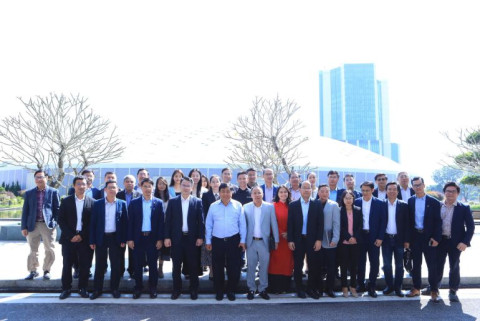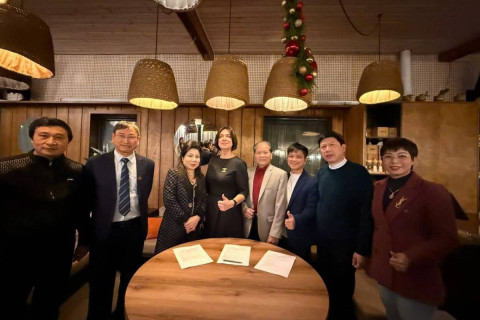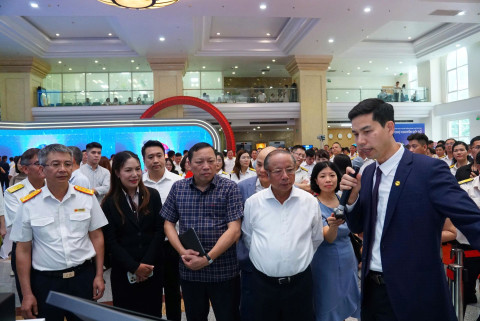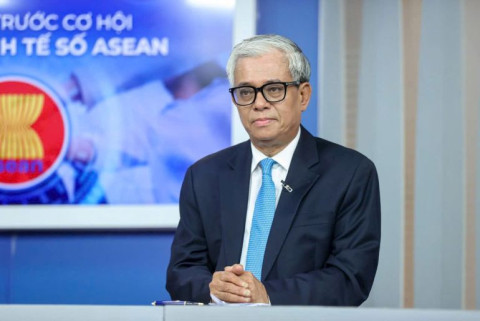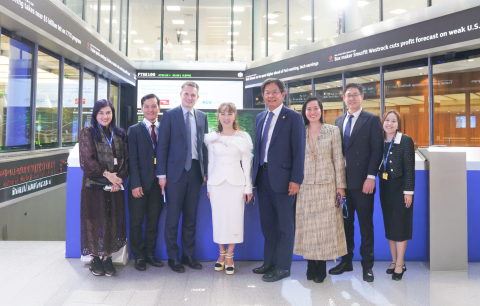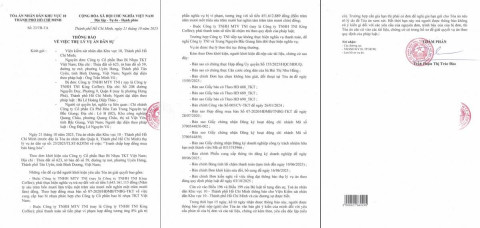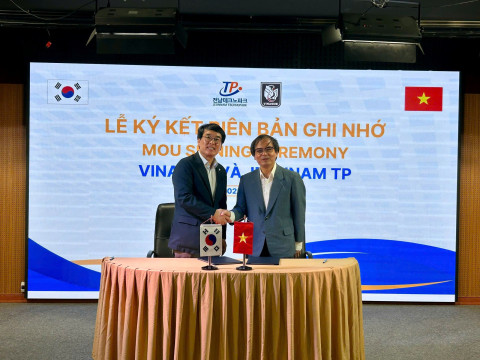Vietnam is in a golden period to implement the project of 1 million hectares of high-quality, low-emission rice
- 214
- Business
- 16:04 01/08/2024
DNHN - The areas of high-quality rice cultivation in the Mekong Delta, which reduce emissions, have been harvested, yielding high productivity, and farmers have gained more profits. Five provinces have registered to participate in the project.
On July 8, 50 hectares of rice grown under the low-emission model of Tien Thuan Cooperative (Thanh An commune, Vinh Thanh district, Can Tho city) during the summer-autumn 2024 crop were harvested. Many farmers, businesses, agricultural officials from within the country, and experts and entrepreneurs from the Philippines came to witness this achievement. This is the first harvested pilot area under the project of 1 million hectares of high-quality, low-emission rice in our country.
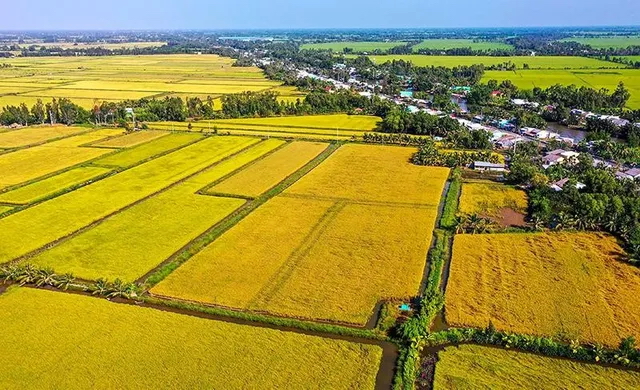
Addressing the issue of increasing farmers' incomes and reducing emissions
These 50 hectares of pilot summer-autumn rice were planted on April 5, 2024. All the rice seeds used were certified by the Mekong Delta Rice Institute, following the guidance with a seed quantity of 60kg/ha (with the old method, farmers used up to 140 kg/ha), fertilizing twice per crop (previously 3-4 times per crop), significantly reducing the amount of irrigation water...
The low-emission rice production model is meticulously guided by experts for farmers, such as machine planting to avoid seed drift, helping rice plants resist lodging during grain formation; deep incorporation of fertilizers 3-4 cm to prevent loss, applying alternate wetting and drying (AWD) water management, site-specific nutrient management (SSNM), integrated pest management (IPM), harvesting with combined harvesters, and collecting straw from fields to make mushroom compost or organic fertilizer.
The very good news is that the yield of summer-autumn rice grown using this model reached 6.3 - 6.5 tons/ha, while the broadcast sowing and row sowing without fertilizer incorporation (the old method) only reached 5.8 - 6.1 tons/ha; farmers' profits increased by 1.3 - 6.2 million VND/ha. The model also helped reduce greenhouse gas emissions by 2-6 tons of CO2e/ha compared to the control fields.
Mr. Nguyen Ngoc He - Vice Chairman of Can Tho City People's Committee said: "The results of this model are the foundation for the agricultural sector to expand to all regions participating in the Project for the Development of 1 million hectares of high-quality, low-emission rice linked to green growth in the Mekong Delta as committed."
The Can Tho Department of Agriculture and Rural Development (DARD) is currently perfecting the production process, training farmers in technical steps, and planning to expand to 148 thousand hectares of high-quality rice.
Also on July 8, Tien Thuan Cooperative and businesses signed a contract to purchase fresh rice for three consecutive crops (summer-autumn 2024, autumn-winter 2024, and winter-spring 2024-2025) with a market price plus an additional 300 VND per kg if the quality is met.
"Rice exporting companies highly appreciate the uniformity and increased quality of exported rice. In the future, many businesses will be interested in building a brand for rice from this process," said Mr. Tran Truong Tan Tai - General Director of Vietnam Rice Company Ltd.

This is the initial success of the low-emission rice cultivation model, which can be spread to Can Tho city and other Mekong Delta provinces when implementing the plan for the 1 million hectares of high-quality rice project. This model can address the biggest challenge for farmers and Vietnam's rice sector, which is to increase the income of rice growers and adapt to climate change for sustainable development.
According to Mr. Tran Thai Nghiem - Deputy Director of Can Tho DARD, Can Tho is developing the model towards forming a business ecosystem, including businesses supplying seeds, inputs such as fertilizers and pesticides; mechanical businesses for soil preparation and harvesting, and digital transformation businesses to connect the components in the chain.
Every year, Can Tho produces three rice crops with a yield of more than 1.3 million tons. Currently, the registered area participating in the 1 million hectares project has 34 farmer cooperatives established, linked with 8 businesses to produce and consume nearly 26,000 hectares.
Expanding new production methods
In Dong Thap, this project is also being implemented with the participation of 24 adjacent households in Thang Loi Cooperative.
Mr. Nguyen Van Hung - Director of Thang Loi Cooperative, Dong Thap said that farmers are implementing the SRP project, recording field notes and moving towards recording via mobile phones. Farmers in Dong Thap are organizing linkages with businesses, cooperatives, and related parties to build a rice value chain.
By the end of 2024, Dong Thap will have about 28,500 hectares participating in the project. By 2025, the area will reach about 69,000 hectares of high-quality, low-emission rice production.
In Soc Trang, on the 50-hectare field of Hung Loi Cooperative, farmers apply mechanization with various methods such as row sowing and deep incorporation of fertilizers.
"Training farmers on cultivation procedures and fertilizer use is based on technical guidelines, implementing various techniques such as devices to measure and reduce greenhouse gas emissions, and measure water levels to save fertilizers.”
It is known that currently, 5 provinces in the Mekong Delta have registered to participate in the 1 million hectares of high-quality, low-emission rice project, with an area of 640 hectares.
Mr. Tran Thanh Nam - Deputy Minister of Agriculture and Rural Development said: "Firstly, the World Bank (WB) is very supportive of this project; secondly, the International Rice Research Institute (IRRI). They identify this as the first high-quality, low-emission rice cultivation model in the world. The World Bank identifies this as a key model in the Asia-Pacific region, so it is of great interest to international organizations, embassies, and businesses."
By 2030, about 2.7 billion USD is expected to be needed for this project
On the afternoon of June 29, the Ministry of Planning and Investment worked with representatives of the Ministry of Agriculture and Rural Development and the Mekong Delta provinces on the use of World Bank loans to support the implementation of the Project for the Development of 1 million hectares of high-quality, low-emission rice linked to green growth in the Mekong Delta.
Mr. Ton That Son Phong, Deputy Head of the Project Management Board (Ministry of Agriculture and Rural Development), said that from now until 2030, about 2.7 billion USD from various sources is expected to be needed to implement this project. The Ministry of Agriculture and Rural Development has proactively worked with many international organizations such as WB, Asian Development Bank (ADB), SNV Organization of the Netherlands, IRRI... To date, WB has committed to loans and technical support; IRRI and some other organizations have committed to providing technical support.
Currently, the Ministry of Agriculture and Rural Development, along with 12 provinces and cities in the Mekong Delta and other ministries and sectors, has directly worked with WB, domestic and international experts to finalize the draft Project for Infrastructure and Technical Support for High-Quality, Low-Emission Rice in the Mekong Delta. This draft project is expected to be submitted to the Prime Minister for consideration and decision in the third quarter of 2024.
On the morning of July 17, at the Government Office, Deputy Prime Minister Tran Luu Quang chaired a meeting to hear reports on the progress of the sustainable development project for 1 million hectares of high-quality, low-emission rice linked to green growth in the Mekong Delta by 2030.
According to initial assessments, the rice cultivation model under this project during the summer-autumn 2024 crop in Can Tho city has brought positive results in both productivity and profitability for farmers and emission reduction. Notably, many businesses have committed to purchasing all the rice produced in the pilot models.
However, the implementation of the project still faces certain difficulties, primarily because Vietnam is the first country in the world to implement large-scale emission reduction in rice; the activities and content are new, with no precedent to refer to.
Farmers' understanding of this project is still limited, some households still produce according to old habits, and for the project to be effective, it first requires farmers' consensus, with a minimum scale of 50 hectares of contiguous area, while many provinces have fragmented and small-scale rice cultivation areas.
The infrastructure for high-quality, low-emission rice production in localities is not synchronized. The number of businesses participating in linking with cooperatives and farmer groups to invest and commit to purchasing products is still limited.
Funding for project implementation currently does not have a separate stream for domestic budget capital, while the process of developing projects for WB loans takes time.
Deputy Prime Minister Tran Luu Quang believes that the project initiates a new production method aligned with global production and consumption trends; creates a groundbreaking shift in agricultural thinking in the Mekong Delta, which is facing rapidly evolving and unpredictable climate change impacts; contributes to increasing the income and living standards of rice farmers and businesses; and helps Vietnam achieve its goal of net-zero emissions by 2050.
The project brings high economic benefits and repositions low-carbon rice
During a meeting with the Ministry of Planning and Investment and the Ministry of Agriculture and Rural Development on June 29, Mr. Cao Thang Binh, a senior expert from the World Bank, noted that Vietnam is one of the top three rice-exporting countries in the world. One in six people eating rice globally consumes Vietnamese rice. This is the first time Vietnam and the world have a large-scale project for sustainable, low-emission rice production. Vietnam is at a golden moment to implement this project, repositioning low-carbon rice. This is a way for Vietnam to promote and rebrand Vietnamese rice, demonstrate its responsibility towards rice production, and elevate Vietnam's position globally.
Mr. Cao Thang Binh stated that the project is highly economically beneficial. Preliminary estimates suggest that an investment of around 1 billion USD for the entire program could generate approximately 4 billion USD in returns. The reduction in production costs, including a 30% decrease in fertilizer usage, presents significant benefits for the country. Additionally, implementing the 1 million hectare high-quality rice project will contribute to better environmental management in the Mekong Delta, as well as improving economic, social, and public health burdens. The project also supports the government's global commitment to achieving net-zero emissions by 2050.
"Although the revenue from selling carbon credits may not be substantial (expected to generate over 100 million USD per year from 1 million hectares of low-emission rice), it is very important. If Vietnam does not engage in low-emission rice production, it will miss an opportunity for other countries," Mr. Cao Thang Binh said.
Vinh Hy
Related news
#Vietnamese goods

Startup Selex Motors became the second electric vehicle brand to export abroad
According to the founder of Selex Motors, the plan to export abroad came earlier than expected, and in the future, Selex Motors also aims to develop other markets in Southeast Asia.
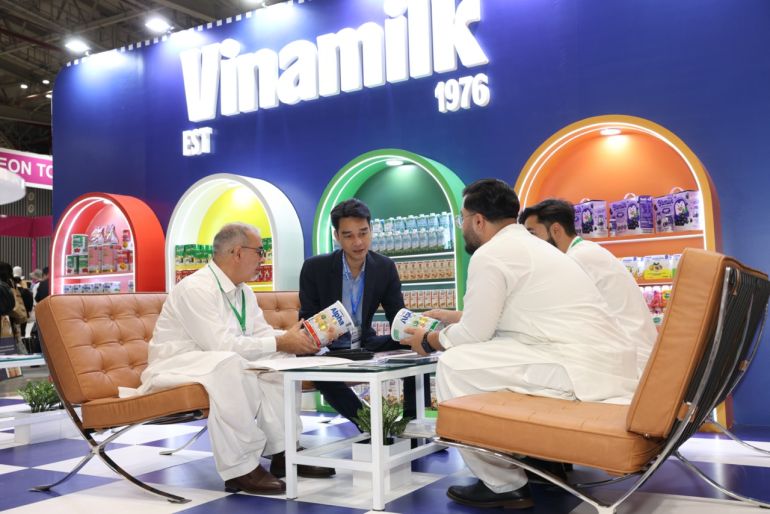
Q2/2024: Vinamilk reported highest revenue growth in two years
Vinamilk has just announced its Q2/2024 business results with several highlights. Notably, consolidated total revenue reached a record high of 16,665 billion VND, making this the highest growth quarter since the beginning of 2022.
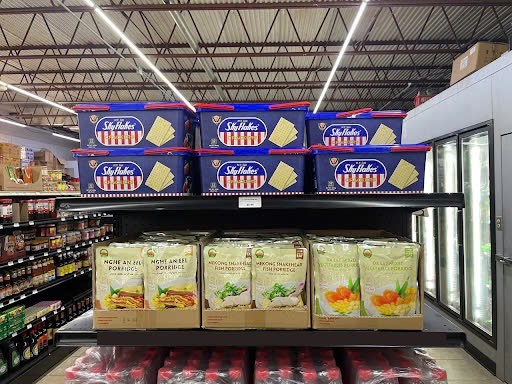
Vietnam's oldest nutritional porridge officially exported to the United States
In October 2024, Vietnam's oldest nutritional porridge brand, Cay Thi, officially hit the shelves of Asian markets in more than 37 states across the United States.
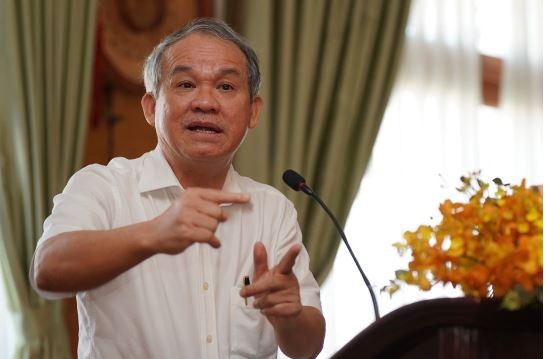
‘'Bầu Đức'’ and the banana revolution at Hoang Anh Gia Lai
Amid economic challenges, Hoang Anh Gia Lai (HAGL) has staged a strong comeback under the leadership of "Bầu Đức", thanks to banana cultivation.
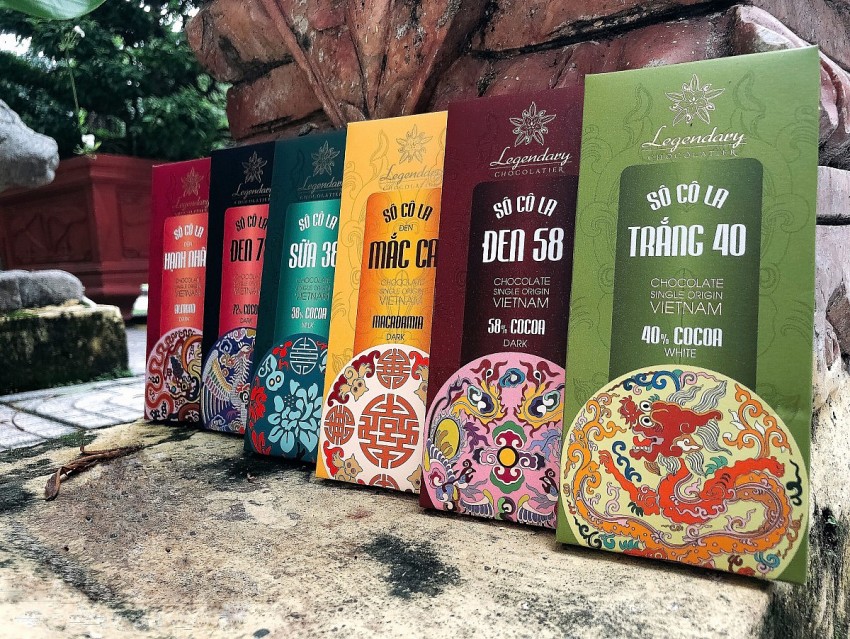
Million-dollar chocolate startup by a Vietnamese accountant
Legendary Chocolate, a startup founded by accountant Bùi Hồng Hạnh, made headlines after securing 10 billion VND in funding from Shark Tank Vietnam.

Many solutions needed for sustainable handicraft exports
To achieve sustainable handicraft exports, a long-term strategy is required, ranging from improving production capacity and enhancing brand value to leveraging e-commerce.
Đọc thêm Business
From New Year messages of World Leaders to the “new rules” of the Global economy in 2026
At a pivotal moment of transition, New Year messages from capitals such as Hanoi, Beijing, Washington and Paris reflect distinct priorities and strategic visions.
Connecting Leaders, Shaping the Future: Strategic Leadership Planning Meeting – CorporateConnections Hanoi A
"Your network is your most powerful flowing asset. It generates value, multiplies opportunities, and accelerates your influence across borders."
Innovative ESG enterprise: Trạm Xe Việt startup proposes solutions to build a green mobility ecosystem
As Vietnam commits to achieving Net Zero by 2050 and tightens emissions standards, the transportation sector faces unprecedented pressure to transform.
Deputy Prime Minister Nguyễn Chí Dũng: “The country’s major challenges weigh heavily on my mind — and we must resolve them together.
On the morning of November 26, 2025, Deputy Prime Minister Nguyễn Chí Dũng chaired a high-level working session at the National Innovation Center (NIC) in Hòa Lạc.
Unitsky String Technologies signs cooperation agreements with three Vietnamese partners, opening a new direction for smart mobility and sustainable development
The signing ceremony took place in Minsk, Belarus, on November 28, 2025.
Before the D‑day to abolish flat‑rate tax: Fear of technology and costs leave small traders struggling to adapt
From 1 January 2026 the flat‑rate tax regime will be abolished. Small business households will be required to declare tax based on actual revenue. MISA supports the transition with technology to help micro‑merchants adapt smoothly and transparently.
Vietnamese enterprises at a crossroads: the impact of a potential US–China deal
As the world closely monitors every shift in US-China relations, emerging signals of a strategic agreement between the two global powers are raising hopes for global economic stability.
HDBank: Impressive profit growth, leading in profitability and advancing international integration
Ho Chi Minh City Development Joint Stock Commercial Bank (HDBank, stock code HDB) announced its consolidated profit before tax for the first 9 months of 2025 reached VND 14,803 billion, marking a 17% increase year-on-year (YoY).
TNI King Coffee sued for over VND 5 Billion in unpaid debts
On October 21, 2025, the People’s Court of District 10 in Ho Chi Minh City officially accepted a civil lawsuit concerning a commercial contract dispute between TKT Vietnam Plastic Packaging Joint Stock Company and TNI King Coffee Co., Ltd.
VINASME and Jeonnam Technopark Sign MOU on technology cooperation, human resource training, and trade promotion
On October 15, 2025, in Hanoi, VINASME and Jeonnam Technopark (Korea) signed an MOU to promote trade, advance technology transfer, and develop human resources between enterprises of both nations.





